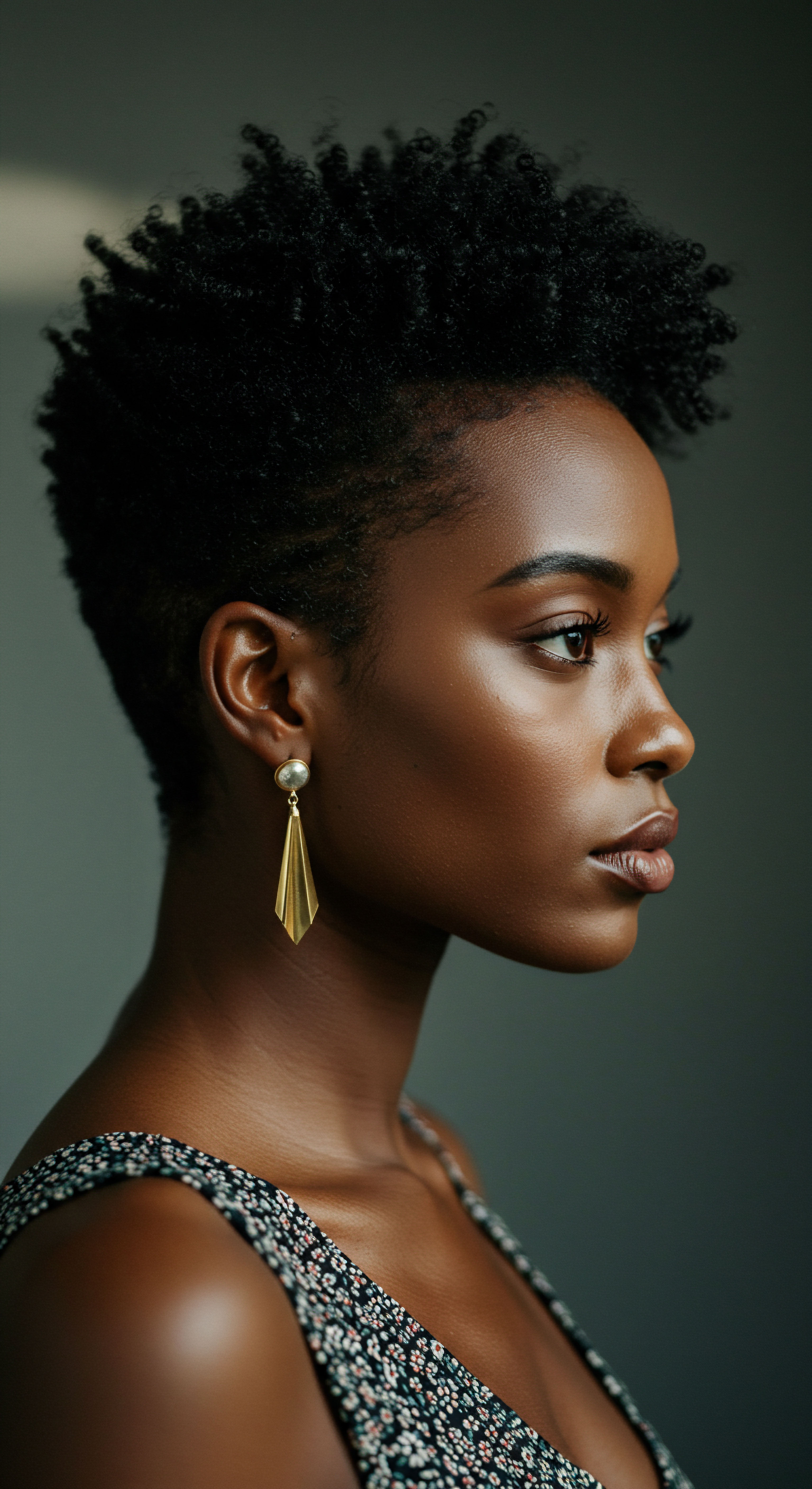
Roots
The quiet hours of night, often dismissed as mere cessation of activity, hold a profound, restorative power, a gentle, unseen current flowing through our very being. It is within this nightly repose that a silent, yet intricate, conversation unfolds between our body’s deepest systems and the delicate vitality of our hair. This is not simply a period of stillness; rather, it represents a dynamic orchestration of biological processes, each whispering secrets to the resilience and growth of our strands, particularly those with rich, textured patterns that demand a unique, knowing care. Our hair, far from being a static adornment, is a living extension of our inner health, mirroring the ebb and flow of our physiological landscape.

The Silent Architect of Strands
Beneath the surface of our scalp, where each strand finds its origin, lies a vibrant, constantly working factory ❉ the hair follicle. These tiny, remarkable structures are the architects of our hair, tirelessly constructing the keratinous fibers we see and cherish. Their efficiency, their capacity for robust production, is deeply tied to the quality of our rest. During the day, our bodies contend with myriad stressors, from environmental aggressors to the sheer energy demands of daily life.
Night offers a reprieve, a chance for the body to redirect its resources inward, tending to repairs and growth that are often sidelined during waking hours. This nightly redirection of energy towards cellular maintenance and renewal is a quiet yet persistent force, working to fortify the very foundations of our hair.

Cellular Rejuvenation and the Follicle’s Cadence
The deep stages of sleep, particularly slow-wave sleep (SWS), are characterized by heightened cellular activity. This is when the body undertakes its most significant restorative work. For the hair follicle, this means a surge in the division of specialized cells within the bulb, the very engine of hair growth. These rapidly dividing cells, known as matrix cells, are responsible for creating the hair shaft.
Without sufficient, undisturbed deep sleep, this cellular proliferation can falter, leading to a slower growth rate and potentially weaker, more vulnerable strands. The follicle, like a tiny, diligent craftsman, requires undisturbed hours to perform its best work, ensuring each new hair emerges with vigor and structural integrity.
Deep sleep provides the essential, undisturbed hours for hair follicles to engage in robust cellular rejuvenation, fostering stronger, more resilient hair growth.
Moreover, the deep sleep phases also see an increase in the production of growth hormone, a systemic signal that supports tissue repair and regeneration throughout the body. While not exclusively targeted at hair, its systemic availability aids the metabolic demands of the hair follicle, which is one of the most rapidly dividing tissues in the body. This systemic support is critical for maintaining the anagen phase, the active growth period of the hair cycle, ensuring that hair spends more time growing robustly before transitioning to resting or shedding phases.
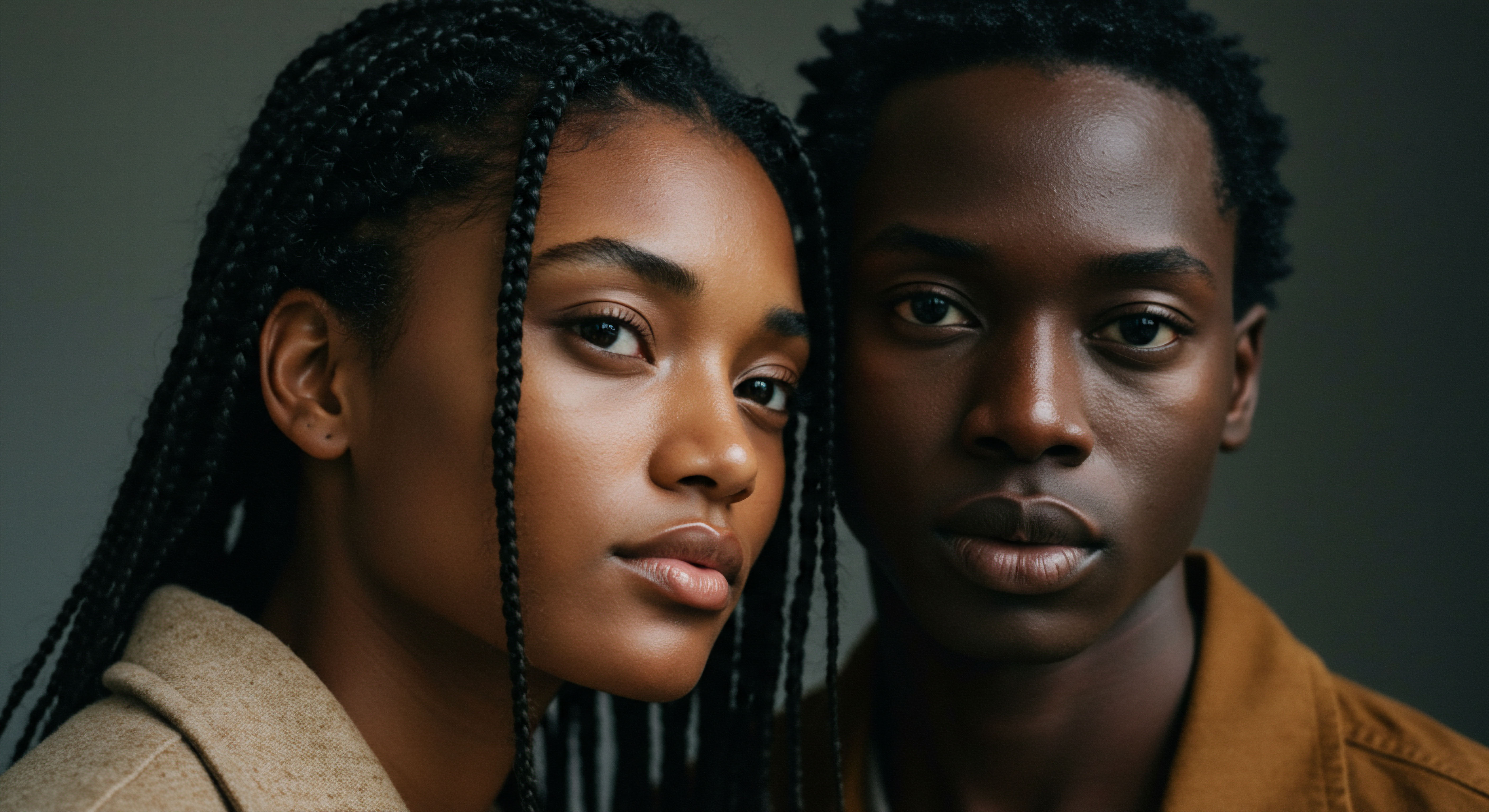
The Anagen Phase’s Nocturnal Symphony
Hair growth occurs in cycles, and the anagen phase represents the period of active growth. The duration and vitality of this phase are profoundly influenced by our nightly slumber. During deep sleep, the body optimizes its internal environment for growth and repair, a condition that directly supports the sustained activity of the hair follicle during its anagen journey.
When sleep is consistently disrupted or insufficient, the follicle may prematurely transition from the anagen phase to the catagen (transitional) or telogen (resting) phases, leading to increased shedding and a perceived thinning of the hair. This shortened growth cycle can diminish the overall density and length of textured hair, which often requires extended anagen periods to achieve significant length.

Hormonal Balances and Hair’s Hidden Helpers
The endocrine system, a network of glands that produce hormones, plays a significant role in hair health, and its delicate balance is finely tuned by our sleep patterns. Hormones like cortisol, often called the stress hormone, are naturally lower during deep sleep, allowing the body to recover from the day’s pressures. Elevated cortisol levels, often a consequence of chronic sleep deprivation, can negatively impact hair follicles, potentially leading to increased shedding.
Conversely, other hormones, such as melatonin, which is intrinsically linked to the sleep-wake cycle, also possess properties that directly influence hair follicle function. This intricate interplay underscores the profound connection between our nightly rest and the hormonal milieu that nourishes our strands.
| Hormone Growth Hormone |
| Nighttime Activity Increased secretion during deep sleep |
| Impact on Hair Health Supports cellular repair and metabolic processes in hair follicles, prolonging the anagen phase. |
| Hormone Cortisol |
| Nighttime Activity Decreased levels during sleep |
| Impact on Hair Health Lower levels reduce stress on follicles, mitigating potential for premature shedding. |
| Hormone Melatonin |
| Nighttime Activity Production peaks during darkness/sleep |
| Impact on Hair Health Directly influences hair follicle activity, potentially extending anagen phase and providing antioxidant protection. |
| Hormone A balanced hormonal environment, optimized during deep sleep, is paramount for hair growth and resilience. |
The body’s restorative processes during deep sleep also extend to optimizing blood flow to the scalp. A healthy blood supply ensures that hair follicles receive a steady delivery of oxygen, nutrients, and hormones necessary for their optimal function. When sleep is compromised, this vital circulation can be impaired, diminishing the nourishment available to the growing hair. Thus, the gentle, rhythmic ebb and flow of our sleep cycles serve as a quiet, powerful support system for the vibrant health of our hair, working from the roots outward.

Ritual
As the day’s light softens and the world quiets, a distinct opportunity arises to extend a gentle, intentional kindness to our textured strands. The shift from the demands of waking hours to the quiet surrender of night offers more than just physical repose; it presents a practical canvas upon which to paint practices that honor and safeguard our hair’s vitality. This is not about rigid rules, but about cultivating a series of thoughtful actions that acknowledge hair’s vulnerability during sleep and proactively work to preserve its inherent beauty. It is an acknowledgment that true hair wellness extends beyond daytime styling, reaching into the very heart of our nightly rhythms.

Crafting the Nighttime Sanctuary
The environment in which we rest holds considerable sway over the condition of our hair. A truly restorative sleep environment considers not only the body’s comfort but also the delicate needs of our strands. This means minimizing friction, maintaining moisture, and providing a gentle, unburdened space for hair to simply exist without external stressors. The choices we make regarding our sleep surfaces and hair coverings can significantly diminish breakage, preserve intricate styles, and prevent the dreaded tangles that often greet us with the morning light.

The Bonnet’s Gentle Shield
For textured hair, a bonnet, or a similar protective head covering, transforms the sleep experience from a potential battleground of friction into a haven of preservation. Cotton pillowcases, while comfortable for skin, can be surprisingly abrasive to hair, particularly those with intricate curl patterns. Their absorbent fibers draw moisture from the hair, leading to dryness, frizz, and ultimately, breakage.
A satin or silk bonnet, conversely, provides a smooth, low-friction surface that allows hair to glide freely, retaining its moisture and preventing mechanical damage. This simple addition to a nightly routine acts as a gentle guardian, protecting styles and promoting overall hair integrity.
A satin or silk bonnet acts as a crucial barrier, protecting textured hair from friction and moisture loss during sleep.
The consistent use of a bonnet also helps to maintain the definition of curls and coils, extending the life of washes and styled looks. This reduces the need for daily manipulation, which in itself is a common cause of breakage for textured hair. The wisdom of this practice has been passed down through generations, a testament to its enduring efficacy in preserving the unique characteristics of coily, curly, and wavy hair.

Pillowcases and the Skin’s Serenade
Should a bonnet not be preferred, or as an additional layer of protection, opting for a satin or silk pillowcase provides similar benefits. These materials offer a gentle surface for hair, minimizing tugging and snagging as one shifts during sleep. Beyond hair health, these materials also offer a softer surface for the skin, potentially reducing sleep lines and supporting skin’s natural moisture balance. The interplay between healthy skin and healthy hair is a continuous conversation, and the pillowcase serves as a quiet facilitator in this dialogue.

Preparing Strands for Slumber
Beyond external coverings, the condition of the hair itself before sleep contributes significantly to its morning appearance and long-term health. A thoughtful pre-sleep routine can infuse moisture, reduce tangles, and set the stage for optimal nocturnal repair.
- Moisture Application ❉ Gently misting hair with water or a leave-in conditioner before bed can help to replenish moisture lost throughout the day, ensuring strands remain supple and resilient during sleep.
- Gentle Detangling ❉ Carefully detangling hair with fingers or a wide-tooth comb while it is slightly damp, or after applying a detangling product, prevents knots from tightening overnight, making morning styling less arduous and reducing breakage.
- Protective Styling ❉ Loosely braiding, twisting, or pineapple-ing textured hair before bed can preserve curl patterns, minimize friction, and prevent excessive stretching or pulling of the strands during sleep.
These practices, though seemingly small, collectively form a powerful shield against the potential stresses of sleep, allowing the body’s internal repair mechanisms to work on hair that is already in a state of gentle preparedness. They transform a simple act of rest into a mindful ritual of hair care.

Beyond the Physical Mindful Unwinding
The preparation for deep, restorative sleep extends beyond physical applications. The mind’s state profoundly impacts the body’s ability to truly rest and, consequently, its capacity for repair. Engaging in calming activities before bed—reading, gentle stretching, or quiet reflection—signals to the nervous system that it is time to unwind. This mental deceleration aids in achieving the deep sleep necessary for optimal hair health, ensuring that the body is not just still, but truly at peace, allowing its intricate biological systems to work their magic.
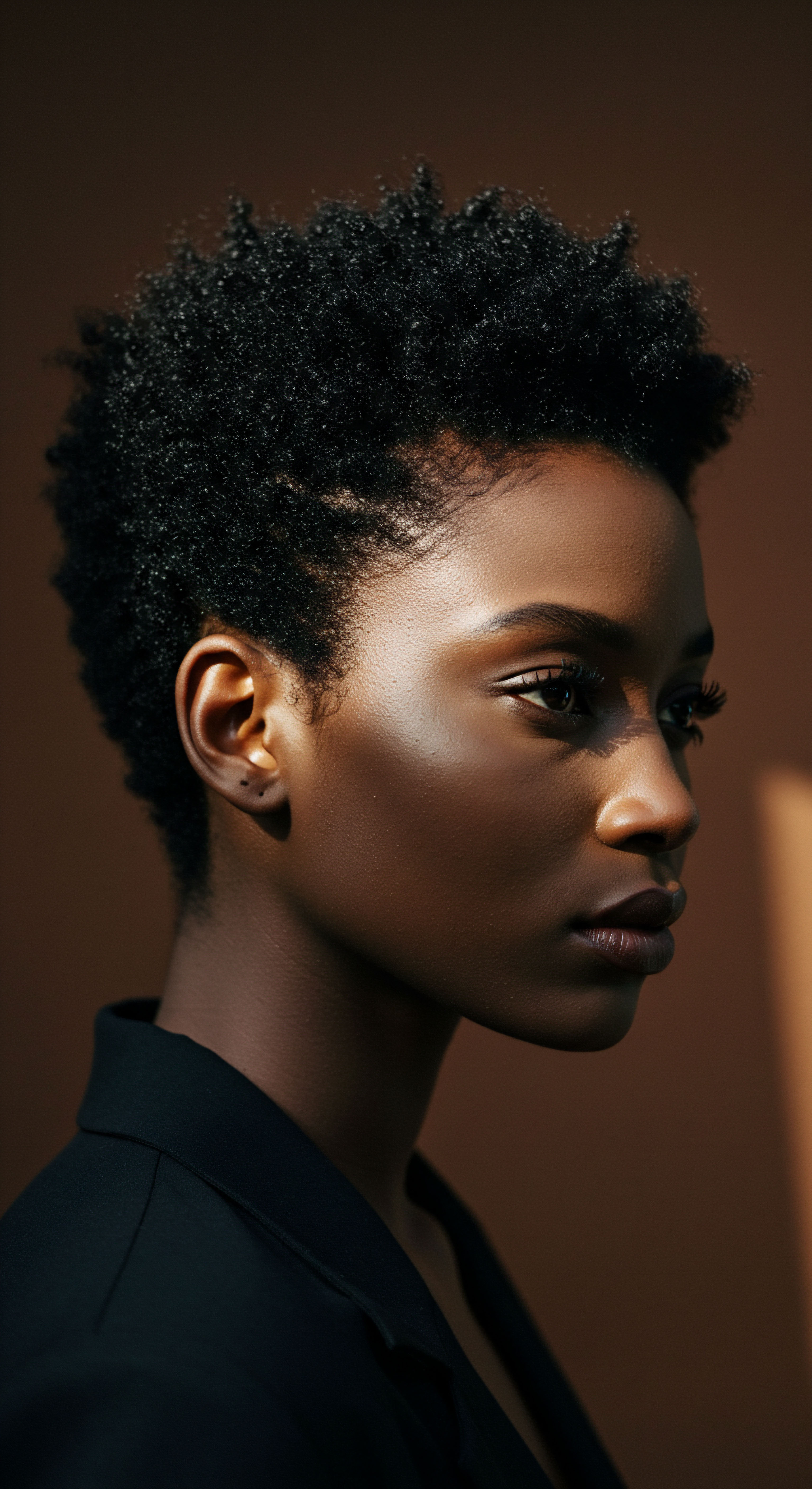
Relay
To truly appreciate the intricate dance between deep sleep and the vitality of our hair, we must venture beyond surface observations, delving into the sophisticated chronobiology that orchestrates our very existence. The body is a marvel of interconnected systems, each governed by an internal clock, and hair, far from being an isolated entity, responds profoundly to these rhythmic signals. This deeper inquiry reveals not only the ‘how’ but also the ‘why’ behind sleep’s profound influence, connecting biological imperatives with the enduring cultural reverence for healthy, vibrant hair.
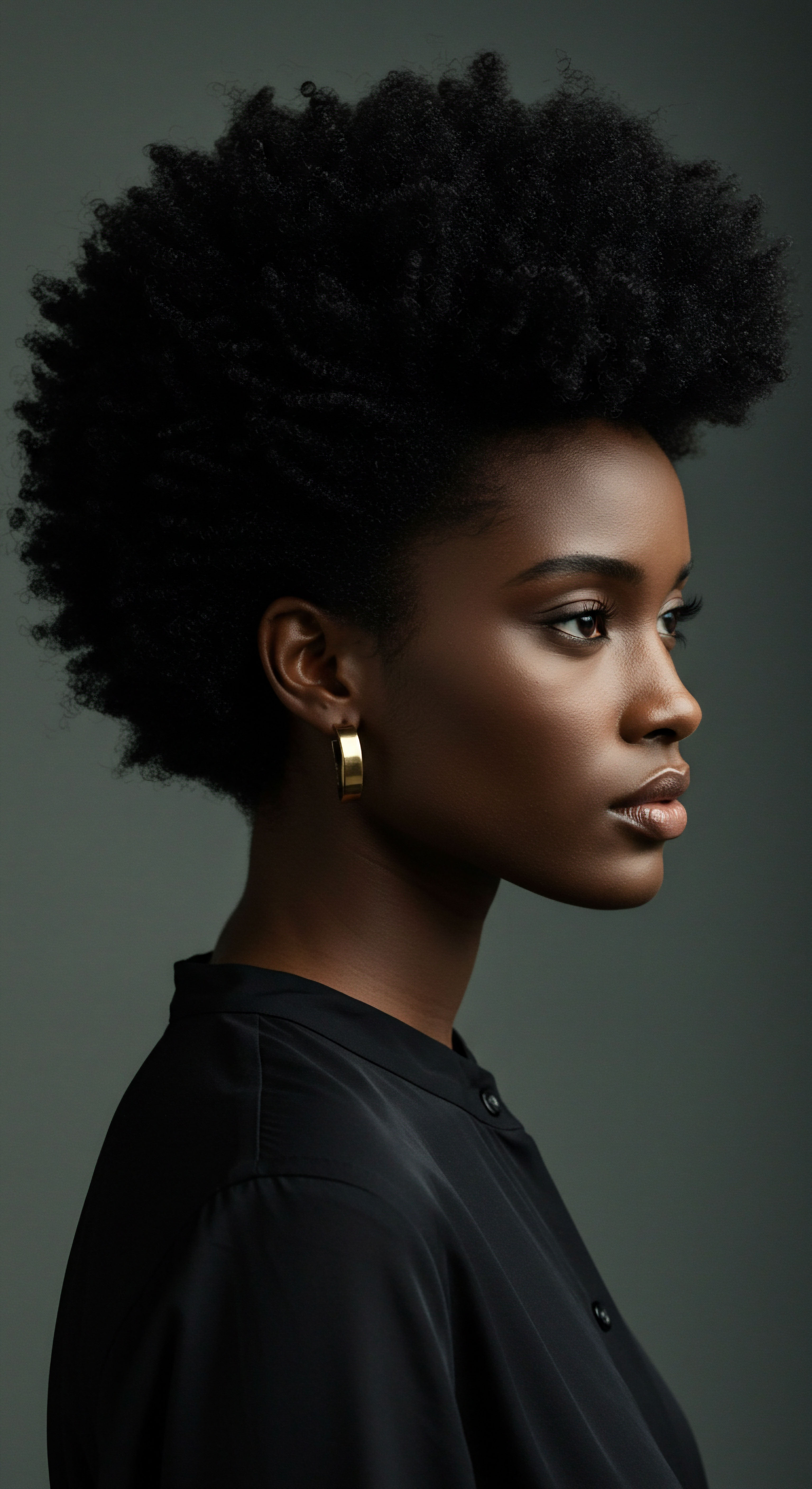
Chronobiology and Hair’s Inner Clock
Every cell in our body, including those within the hair follicle, possesses its own circadian rhythm, a roughly 24-hour cycle that dictates periods of activity and rest. These cellular clocks are synchronized by master clocks in the brain, primarily the suprachiasmatic nucleus, which responds to light and darkness. When our sleep-wake cycle is disrupted, these delicate cellular rhythms within the hair follicle can become desynchronized.
This internal disarray can impair the follicle’s ability to properly execute its growth cycle, leading to suboptimal hair production. The consistent pattern of deep sleep helps to reinforce and stabilize these follicular rhythms, ensuring that the processes of proliferation, differentiation, and maturation occur at their most efficient times.

The Melatonin-Hair Follicle Dialogue
One of the most compelling insights into sleep’s influence on hair involves melatonin, the hormone primarily associated with regulating our sleep-wake cycle. Melatonin production surges in darkness, signaling to the body that it is time for rest. Beyond its role in sleep, melatonin has been identified as a potent antioxidant and a direct modulator of hair follicle activity. Research indicates that hair follicles possess melatonin receptors, suggesting a direct line of communication between this sleep hormone and the hair’s growth machinery.
A particularly illuminating study published in the Journal of Pineal Research explored the topical application of melatonin for diffuse hair loss in women. The findings suggested that melatonin could promote hair growth and reduce hair loss by prolonging the anagen phase and influencing the expression of certain growth factors within the follicle. This offers a compelling example of how a substance intrinsically linked to our sleep cycles can directly influence the health and growth patterns of our hair, highlighting a less commonly discussed, yet powerful, aspect of the deep sleep connection. It posits that the body’s natural production of melatonin during deep, uninterrupted sleep could contribute to hair vitality, working from within to support the follicle’s functions.
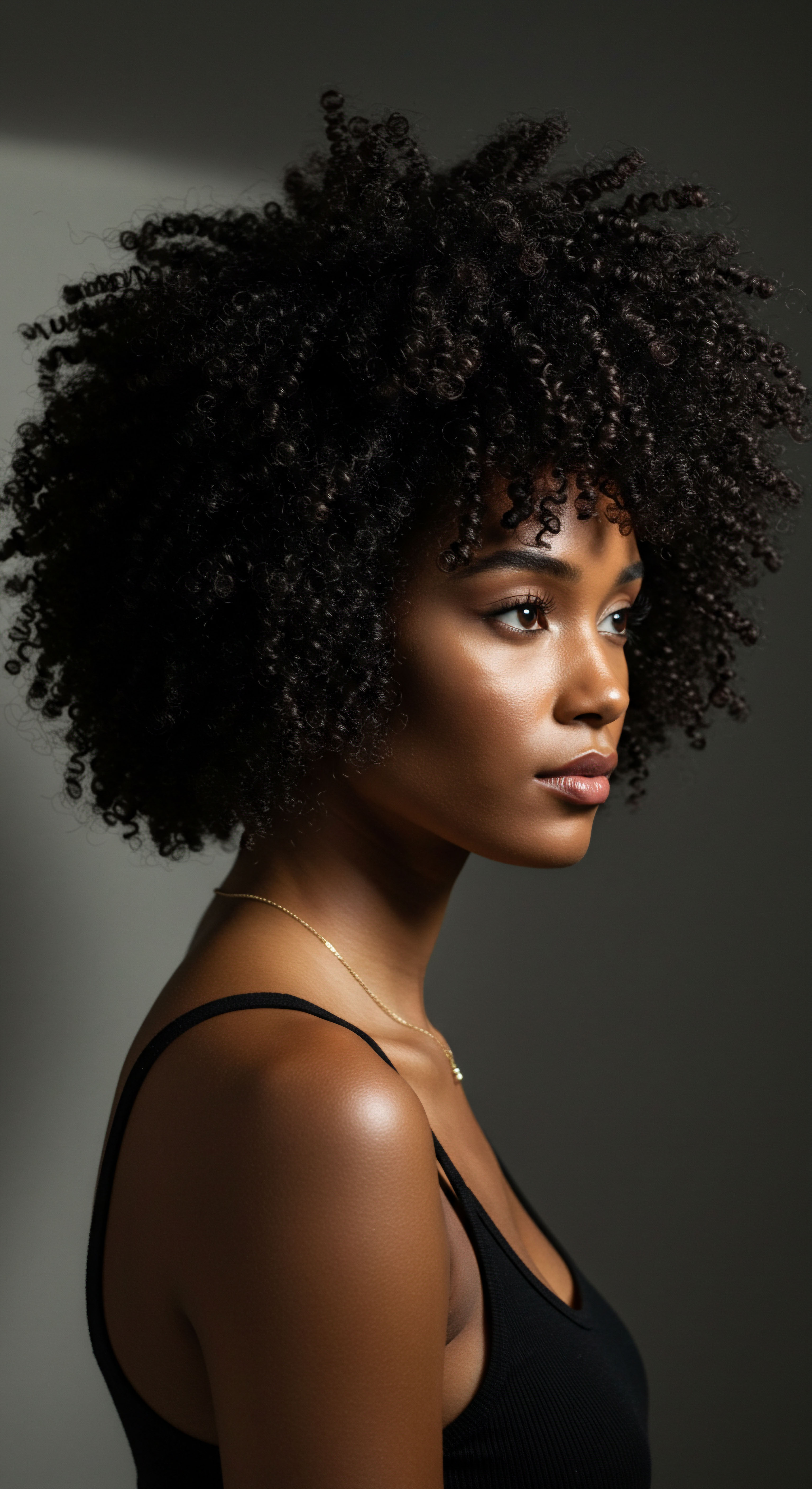
Stress, Sleep Debt, and Telogen Effluvium’s Shadow
Chronic sleep deprivation acts as a physiological stressor, triggering a cascade of responses that can negatively impact hair. When the body perceives a consistent lack of rest, it enters a state of heightened alert, leading to elevated levels of stress hormones such as cortisol. Sustained high cortisol levels are known to shunt energy away from non-essential functions, including hair growth, and can prematurely push hair follicles into the telogen (resting) phase. This phenomenon, known as telogen effluvium, results in widespread hair shedding typically observed a few months after a significant stressor, including prolonged sleep debt.
Chronic sleep deprivation elevates stress hormones, potentially triggering widespread hair shedding through a condition known as telogen effluvium.
The relationship here is bidirectional ❉ poor sleep induces stress, which harms hair, and stress itself can disrupt sleep, creating a detrimental cycle. Deep sleep provides the essential counter-balance, allowing cortisol levels to recede and the body’s stress response systems to reset. This nightly reset is vital for preventing the accumulation of stress-induced damage to the hair growth cycle.
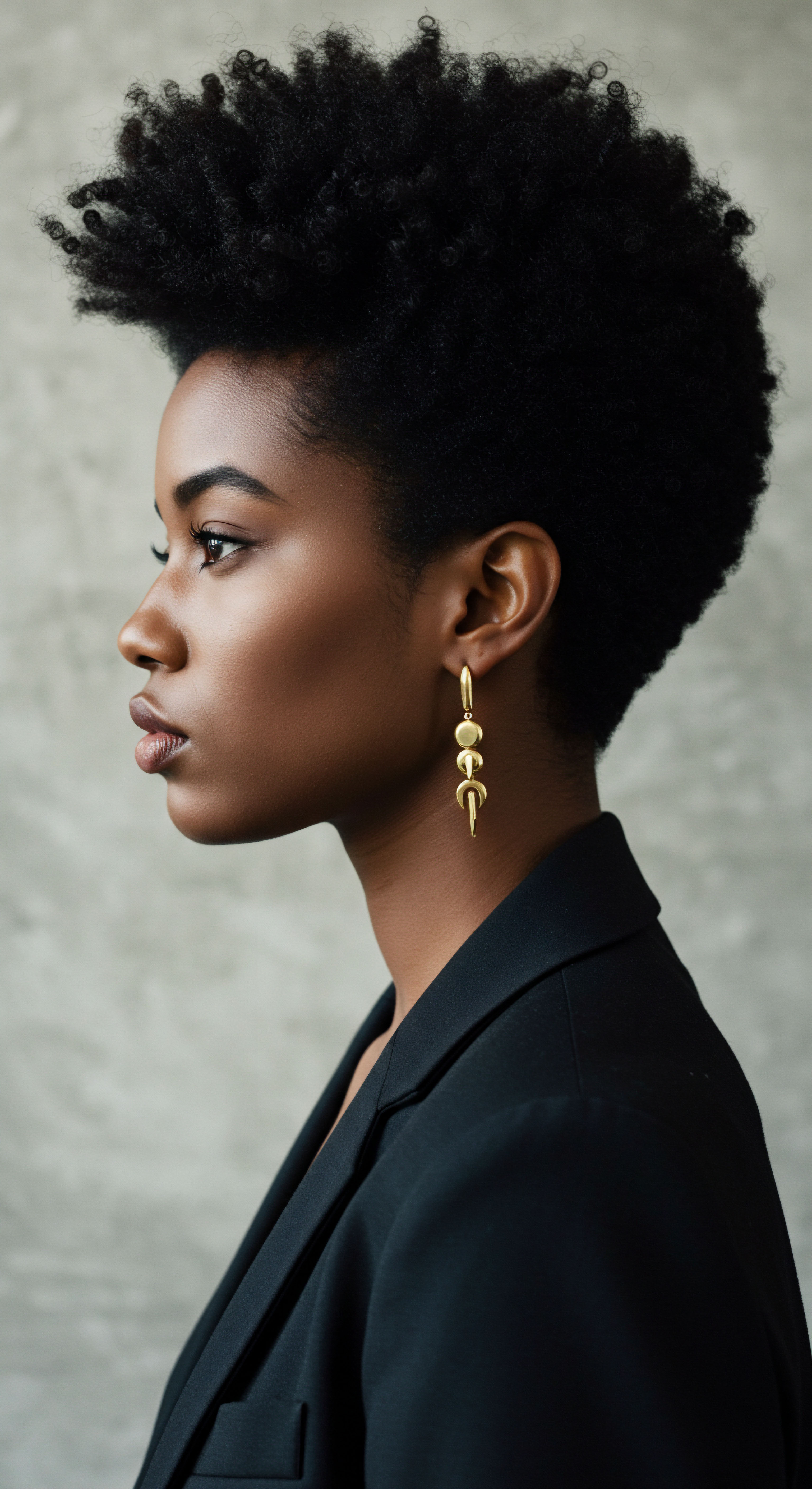
Cultural Echoes of Rest and Hair Adornment
Across diverse cultures, particularly those with rich traditions of textured hair care, the reverence for rest and the meticulous preparation of hair for sleep are not merely anecdotal practices; they are often deeply ingrained, passed-down wisdom. From elaborate nighttime wrapping rituals to the use of protective bonnets and headscarves, these practices reflect an intuitive understanding of hair’s vulnerability during sleep and the necessity of its preservation. These traditions often existed long before modern scientific understanding of cellular repair or hormonal rhythms, underscoring a collective, ancestral knowledge of how the rhythms of life, including rest, influence the vibrancy of our hair. This cultural lens reminds us that the scientific insights we now possess often echo ancient wisdom, reinforcing the profound, interconnected nature of well-being.
| Sleep Stage NREM Stage 1 (N1) |
| Key Characteristics Light sleep, transition from wakefulness |
| Hair-Related Impact Initial relaxation, minor metabolic shifts begin. |
| Sleep Stage NREM Stage 2 (N2) |
| Key Characteristics Deeper sleep, reduced heart rate/body temperature |
| Hair-Related Impact Further slowing of body systems, preparation for deeper restoration. |
| Sleep Stage NREM Stage 3 (N3) |
| Key Characteristics Deep sleep (Slow-Wave Sleep) |
| Hair-Related Impact Peak cellular repair, growth hormone release, lowest cortisol. Crucial for follicle regeneration. |
| Sleep Stage REM Sleep |
| Key Characteristics Dreaming, increased brain activity, muscle paralysis |
| Hair-Related Impact Brain consolidation, potential for localized blood flow changes, less direct but important for overall sleep cycle. |
| Sleep Stage The progression through sleep stages optimizes the body's internal environment for hair repair and growth. |
The depth of sleep, therefore, extends its influence far beyond simply feeling refreshed. It is a fundamental pillar supporting the complex biological machinery that maintains our hair, weaving together cellular repair, hormonal regulation, and even the cultural practices that have long acknowledged its vital role. For textured hair, which often requires more deliberate care and is prone to dryness and breakage, this nightly restoration becomes an even more pronounced ally in its journey towards lasting health and beauty.

Reflection
The quietude of night holds a secret, a profound link to the vitality that radiates from our very crowns. Our hair, particularly textured strands, is not merely a surface adornment; it is a living chronicle of our internal rhythms, a sensitive barometer of our well-being. The restorative embrace of deep sleep emerges as a quiet, powerful partner in this journey, orchestrating a symphony of cellular renewal and hormonal balance that whispers life into each follicle.
To honor our sleep is to honor the inherent resilience and beauty of our hair, recognizing that true radiance blossoms from a place of deep, sustained rest. It is a timeless wisdom, echoing through ancestral practices and affirmed by modern understanding, inviting us to find serenity in slumber for the sake of our crowning glory.

References
- Fischer, T. W. Burmeister, G. Schmidt, N. Elsner, P. & Maibach, H. I. (2012). Melatonin increases anagen hair growth and decreases telogen hair in women with androgenic alopecia or diffuse alopecia ❉ Results of a randomized, placebo-controlled, double-blind investigation. Journal of Pineal Research, 50(1), 101-107.
- Oh, S. T. Kim, S. M. Kim, S. S. & Kim, B. K. (2019). The effects of sleep deprivation on hair growth and hair loss in mice. Journal of Cosmetic Science, 70(6), 395-401.
- Paus, R. & Cotsarelis, G. (2008). The biology of hair follicles. The New England Journal of Medicine, 359(14), 1479-1489.
- Rebora, A. (2009). Telogen effluvium. Dermatology, 218(4), 317-321.
- Hardman, J. G. Limbird, L. E. & Gilman, A. G. (Eds.). (2001). Goodman & Gilman’s The Pharmacological Basis of Therapeutics (10th ed.). McGraw-Hill. (For general hormonal effects).
- Kruglikova, A. & Lapchenko, S. (2020). The role of circadian rhythms in skin and hair physiology. Current Problems in Dermatology, 60, 20-27.